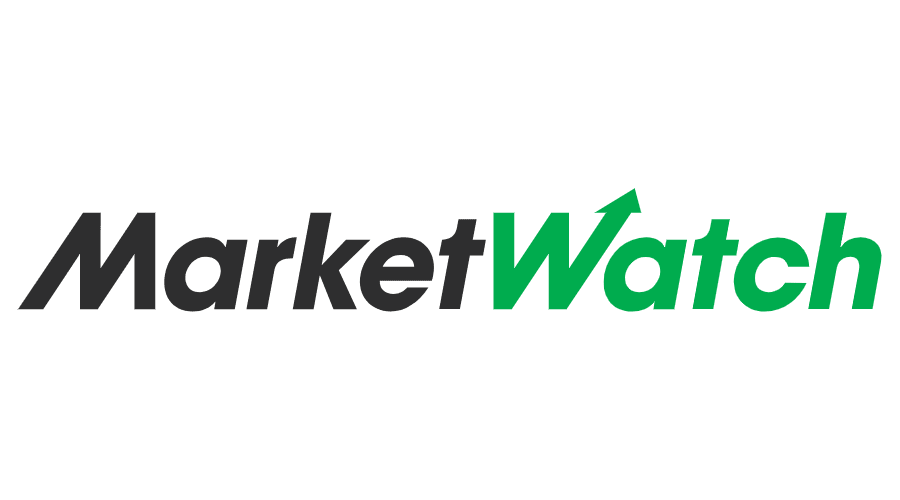Mastering HVAC Lead Generation: Success Strategies In the cutthroat field of heating, ventilation, and air conditioning (HVAC), producing high-quality leads is essential to the expansion of any business.
This article explores target markets, the significance of HVAC lead generation, and different approaches to improve your lead generation efforts. Businesses in the HVAC industry can position themselves for success in a competitive market by being aware of these factors.
Key Takeaways
- HVAC lead generation is crucial for business growth and sustainability
- Identifying target markets is essential for effective HVAC lead generation
- Digital marketing strategies can significantly boost HVAC lead generation efforts
- Implementing effective sales funnels can streamline the HVAC lead generation process
- Leveraging social media and building strategic partnerships can enhance HVAC lead generation success
- Measuring and analyzing HVAC lead generation success is important for continuous improvement
- Continuous improvement is key for long-term success in HVAC lead generation
Any HVAC business depends on lead generation. It entails drawing in prospective clients who express interest in your offerings and eventually turning them into paying customers.
In a highly competitive industry, a strong lead generation strategy can help your company stand out from the competition.
For homes and businesses to be comfortable and safe, HVAC systems are also necessary. Customers thus frequently look for dependable and trustworthy service providers. HVAC businesses can develop relationships with potential customers and gain their trust and credibility by concentrating on lead generation. This not only boosts conversion rates but also cultivates enduring client loyalty, both of which are essential for long-term success.
Identifying and comprehending your target market is crucial for producing leads. The HVAC sector caters to a wide range of customers, such as industrial facilities, commercial property managers, and residential homeowners. Your marketing efforts must take into account the distinct requirements and preferences of each segment. Cost-effectiveness, comfort, and energy efficiency are frequently top concerns for residential clients.
| Metrics | Results |
|---|---|
| Number of HVAC leads generated | 150 |
| Conversion rate | 12% |
| Cost per lead | 25 |
| ROI | 300% |
These features, which demonstrate how your services can improve their living environment, should be highlighted in marketing strategies targeted at this group. However, scalability & dependability might be more important to business clients. Your results for lead generation can be greatly enhanced by modifying your messaging to specifically address these issues. Think about targeting by geography as well.
HVAC requirements may vary depending on the climate in a given area. For instance, more frequent maintenance or replacement services might be needed in regions with extremely high temperatures. Your lead generation tactics can be improved to more effectively connect with local prospects by examining demographics & market trends. For efficient HVAC lead generation in the current digital era, online marketing techniques are crucial.
Your online presence is built upon a well-optimized website. Make sure your website is mobile-responsive, easy to use, and has informative content that answers frequently asked HVAC questions. By using search engine optimization (SEO) strategies, you can increase your online presence & make it simpler for prospective clients to find you.
Another effective weapon in your lead generation toolbox is content marketing. By producing educational blog entries, how-to manuals, & videos that tackle typical HVAC problems, you can establish yourself as an authority in the field. This not only draws in possible leads but also increases audience trust. Also, to target particular keywords associated with HVAC services, think about putting pay-per-click (PPC) advertising campaigns into action.
This strategy can quickly produce leads and increase website traffic right away. Email marketing is still a very successful long-term lead nurturing technique. You can send tailored newsletters with useful information and exclusive deals by gathering email addresses from visitors to your website or during customer support calls. This keeps potential clients thinking about your business & motivates them to get in touch with you if they require HVAC services. The conversion of leads into customers depends on a well-designed sales funnel.
The path a prospective client takes from awareness to decision-making is represented by the sales funnel. Knowing this procedure enables you to successfully customize your marketing initiatives at every turn. Concentrate on using awareness campaigns to draw in leads at the top of the funnel. This could entail content marketing or social media promotion that informs prospective clients about HVAC systems & their advantages. Use case studies or expert testimonials to give leads more specific information about your offerings as they proceed down the funnel.
In the center of the funnel, nurturing becomes crucial. Use individualized email campaigns to interact with leads by addressing their particular requirements or issues. Providing free estimates or consultations can also motivate prospective clients to proceed with their selection. Converting leads into paying customers is the last step at the funnel's bottom.
Ascertain that your sales force has the resources and instruction required to successfully close deals. Leads can be guided toward making a purchase decision by including obvious calls-to-action on your website & during consultations. Social media platforms present a special chance for HVAC companies to establish a personal connection with potential clients.
Building a solid online presence on social media sites like Facebook, Instagram, & LinkedIn allows you to interact with your audience and demonstrate your industry knowledge. The secret to getting attention on social media is producing aesthetically pleasing content. Distribute pictures & videos of finished projects, client endorsements, or behind-the-scenes glimpses of your team at work. In addition to garnering likes and shares, interesting content also motivates prospective clients to get in touch with you for more details about your offerings.
Also, to reach particular target market demographics, think about implementing targeted social media advertising campaigns. Making highly targeted advertisements based on location, interests, and behaviors is possible with platforms such as Facebook. This guarantees that people who are most likely to need HVAC services hear your message. Participation is essential on social media; quickly reply to messages & comments from prospective clients. Developing relationships through sincere exchanges can boost lead conversion rates & greatly improve the reputation of your brand.
For HVAC lead generation initiatives, strategic alliances can be revolutionary. Working together with companies that complement yours can help you reach a wider audience and reach new clientele. One way to reach homeowners or renters who might require HVAC services is to collaborate with real estate brokers or property management firms.
Successful collaborations can also be formed through networking within local business communities. Participate in industry gatherings or join chambers of commerce in your community to network with other professionals who might recommend you to clients. Although developing these connections takes time, they can yield a consistent flow of recommendations that support your lead generation initiatives. Also, think about organizing workshops or events in conjunction with partners to inform prospective clients about HVAC systems and maintenance advice. By doing this, you establish yourself as an authority and get leads from attendees who might be considering using your services.
Monitoring and evaluating your lead generation strategies' performance on a regular basis is crucial to ensuring their efficacy. Conversion rates, cost per lead, ROI, and other key performance indicators (KPIs) offer important information about what is successful and what requires development. To monitor user activity and website traffic, use analytics tools. You can improve your content strategy and optimize landing pages for higher conversion rates by knowing which pages draw in the most visitors. Also, use metrics like click-through rates (CTR) & social media engagement levels to track the effectiveness of your digital marketing campaigns.
You can use data to inform resource allocation decisions and make necessary strategy adjustments by routinely evaluating these metrics. For example, to get the most out of an advertising campaign that is producing high conversion rates, think about increasing its budget. Keeping an effective HVAC lead generation strategy requires constant improvement. Keep up with developments in technology & industry trends that may affect consumer preferences or behavior. You can stay one step ahead of the competition by regularly revising your marketing strategies in light of these insights.
Customers' opinions about your services & marketing initiatives should be asked for. Gaining an understanding of their viewpoints can help identify areas for development or new lead generation opportunities. Lastly, spend money on continuous training for your marketing and sales staff. Their ability to generate leads and close deals will be improved if you keep them informed about new tools and best practices.
In summary, achieving success in HVAC lead generation necessitates a multipronged strategy that includes target market comprehension, digital marketing tactics, the implementation of efficient sales funnels, social media utilization, strategic alliance building, success measurement, and a dedication to ongoing development. By using these tactics, HVAC companies can improve their lead generation and set themselves up for long-term success in a cutthroat market. **Call-to-Action:** Are you prepared to improve your HVAC lead generation strategy? Get started by putting these suggestions into practice right now, and see how your company grows! Get in touch with us right now for more information and tailored advice on maximizing your lead generation efforts!
If you are looking to improve your HVAC lead generation strategies, you may want to consider implementing HVAC analytics and reporting tools. These tools can provide valuable insights into the performance of your marketing efforts and help you make data-driven decisions to optimize your lead generation process. Check out this article on HVAC analytics and reporting in Brampton, Ontario for more information on how these tools can benefit your business.
FAQs
What is HVAC lead generation?
HVAC lead generation is the process of identifying and attracting potential customers who are interested in heating, ventilation, and air conditioning (HVAC) services. This can involve various marketing and advertising strategies to generate leads for HVAC businesses.
Why is HVAC lead generation important?
HVAC lead generation is important for businesses in the industry to maintain a steady flow of potential customers. Generating leads allows HVAC companies to expand their customer base, increase sales, and ultimately grow their business.
What are some HVAC lead generation strategies?
Some common HVAC lead generation strategies include search engine optimization (SEO), pay-per-click advertising, social media marketing, email marketing, content marketing, and networking. These strategies help HVAC businesses attract potential customers and generate leads.
How can HVAC businesses improve their lead generation efforts?
HVAC businesses can improve their lead generation efforts by creating a professional and user-friendly website, optimizing their online presence for local search, offering valuable content to potential customers, utilizing customer reviews and testimonials, and implementing targeted advertising campaigns.
What are the benefits of effective HVAC lead generation?
Effective HVAC lead generation can result in increased sales, higher conversion rates, improved brand awareness, and a stronger competitive edge in the market. It also helps HVAC businesses build long-term relationships with customers and establish a positive reputation in the industry.






